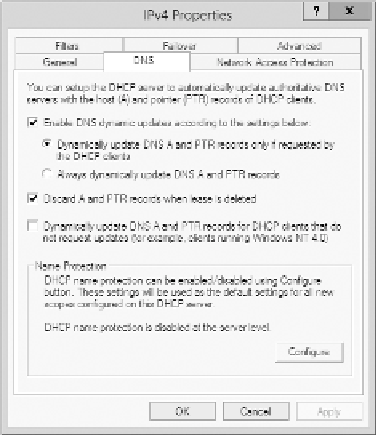Information Technology Reference
In-Depth Information
figure 2.4
DHCP settings for DNS
DNS Queries
As stated earlier, a client can make three types of queries to a DNS server: recursive,
inverse, and iterative. Remember that the client of a DNS server can be a resolver (what
you'd normally call a client) or another DNS server.
Iterative Queries
Iterative queries
are the easiest to understand: A client asks the DNS server for an answer,
and the server returns the best answer. This information likely comes from the server's
cache. The server never sends out an additional query in response to an iterative query. If
the server doesn't know the answer, it may direct the client to another server through a
referral.
Recursive Queries
In a
recursive query
, the client sends a query to a name server, asking it to respond either
with the requested answer or with an error message. The error states one of two things:
■
The server can't come up with the right answer.
■
The domain name doesn't exist.
In a recursive query, the name server isn't allowed just to refer the client to some other
name server. Most resolvers use recursive queries. In addition, if your DNS server uses a
forwarder, the requests sent by your server to the forwarder will be recursive queries.
Figure 2.5 shows an example of both recursive and iterative queries. In this example, a
client within the Microsoft Corporation is querying its DNS server for the IP address for















Search WWH ::

Custom Search